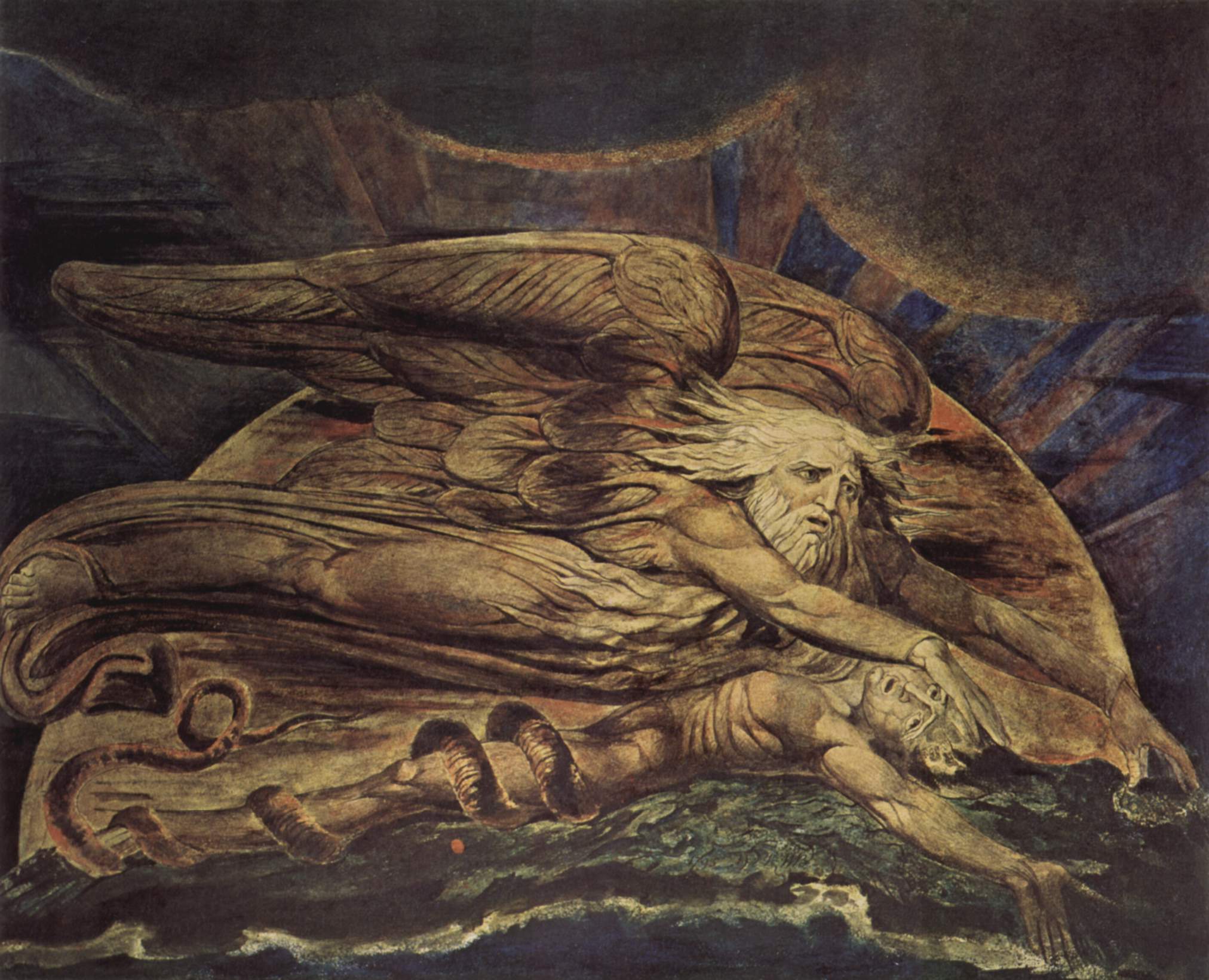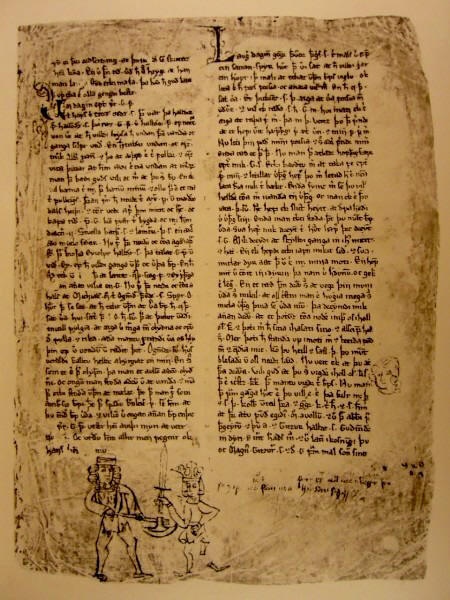|
Palnatoki
Palnatoke or Palnatoki, sometimes written Palna-Toki or Palna Toki (Old Norse: or ), was a legendary Danish hero and chieftain of the island of Fyn. According to the ''Jómsvíkinga saga'', Palnatoki founded the brotherhood of Jomsvikings and established its laws. According to the Jómsvíkinga saga, he was the son of Palner Tokesen and his wife Ingeborg who was the daughter of the Geatish earl Ottar Jarl. Palnatoke raised king Harald Bluetooth's son Sweyn Forkbeard and was a staunch supporter of the old pagan faith. Harald Bluetooth had allowed Christian missionaries from the Archbishop of Hamburg-Bremen missionary in Denmark and the king himself was baptized once between 960 and 965. Palnatoke convinced Sweyn to wage war on his father. In the mid-980s, Sweyn revolted against his father and seized the throne. Harald was driven into exile and died shortly afterwards. According to some accounts, Palnatoki himself slew Harald. In addition to religious motives, he may have been t ... [...More Info...] [...Related Items...] OR: [Wikipedia] [Google] [Baidu] |
Shooting An Apple Off One's Child's Head
Shooting an apple off one's child's head, also known as the apple-shot (from German ') is a feat of marksmanship with a bow that occurs as a motif in a number of legends in Germanic folklore (and has also been connected with non-European folklore). In the Stith Thompson Motif Index it is F661.3, described as "Skillful marksman shoots apple from man's head" or "apple shot from man's head", though it always occurs in the form of the marksman being ordered to shoot an apple (or occasionally another smaller object) off his own son's head. It is best known as William Tell's feat. Examples Palnatoki The earliest known occurrence of the motif is from the 12th century, in Saxo Grammaticus' version of the story of Palnatoki, whom he calls ''Toko'' ('' Gesta Danorum'' Book 10, chapter 7). Toko, who had been for some time in the service of the king /nowiki>Harald Bluetooth">Harald_Bluetooth.html" ;"title="/nowiki>Harald Bluetooth">/nowiki>Harald Bluetooth/nowiki>, had, by the deeds in wh ... [...More Info...] [...Related Items...] OR: [Wikipedia] [Google] [Baidu] |
Adam Bell
Adam Bell was a legendary English outlaw. He and his companions William of Cloudsley and Clym of the Clough lived in Inglewood Forest near Carlisle and were figures similar to Robin Hood. Their story is told in Child Ballad 116 entitled ''Adam Bell, Clym of the Cloughe and Wyllyam of Cloudeslee''. The basis of the tale has historical roots in the criminal activities of the Folville and Coterel gangs. At one point William of Cloudsley, who is famed as an archer, shoots an arrow through an apple on his son's head at six score paces, a feat also ascribed to William Tell and other heroes. The oldest known copy of this ballad was printed by Wynkyn de Worde in 1505. There are notable parallels between this ballad and that of '' Robin Hood and the Monk'', but whether either legend was the source for the other cannot be established. Surviving early copies In popular culture In the prologue to Howard Pyle's 1883 novel ''The Merry Adventures of Robin Hood'', Little John upon fir ... [...More Info...] [...Related Items...] OR: [Wikipedia] [Google] [Baidu] |
Odin
Odin (; from ) is a widely revered god in Norse mythology and Germanic paganism. Most surviving information on Odin comes from Norse mythology, but he figures prominently in the recorded history of Northern Europe. This includes the Roman Empire's partial occupation of Germania ( BCE), the Migration Period (4th–6th centuries CE) and the Viking Age (8th–11th centuries CE). Consequently, Odin has hundreds of names and titles. Several of these stem from the reconstructed Proto-Germanic theonym ''Wōðanaz'', meaning "lord of frenzy" or "leader of the possessed", which may relate to the god's strong association with poetry. Most mythological stories about Odin survive from the 13th-century ''Prose Edda'' and an earlier collection of Old Norse poems, the ''Poetic Edda'', along with other Old Norse items like '' Ynglinga saga''. The ''Prose Edda'' and other sources depict Odin as the head of the pantheon, sometimes called the Æsir, and bearing a spear and a ring. Wid ... [...More Info...] [...Related Items...] OR: [Wikipedia] [Google] [Baidu] |
Sigurð
Sigurd ( ) or Siegfried (Middle High German: ''Sîvrit'') is a legendary hero of Germanic heroic legend, who killed a dragon — known in Nordic tradition as Fafnir () — and who was later murdered. In the Nordic countries, he is referred to with the epithet "Fáfnir's bane" (, , , ), and is also widely known as "the Dragon Slayer". In both the Norse and continental Germanic traditions, Sigurd is portrayed as dying as the result of a quarrel between his wife (Gudrun/Kriemhild) and another woman, Brunhild, whom he has tricked into marrying the Burgundians, Burgundian king Gunther, Gunnar/Gunther. His slaying of a dragon and possession of the hoard of the Nibelungen is also common to both traditions. In other respects, however, the two traditions appear to diverge. The most important works to feature Sigurd are the , the ''Völsunga saga'', and the ''Poetic Edda''. He also appears in numerous other works from both Germany and Scandinavia, including a series of The Types of the S ... [...More Info...] [...Related Items...] OR: [Wikipedia] [Google] [Baidu] |
Adam Gottlob Oehlenschläger
Adam is the name given in Genesis 1–5 to the first human. Adam is the first human-being aware of God, and features as such in various belief systems (including Judaism, Christianity, Gnosticism and Islam). According to Christianity, Adam sinned in the Garden of Eden by eating from the tree of the knowledge of good and evil. This action introduced death and sin into the world. This sinful nature infected all his descendants, and led humanity to be expelled from the Garden. Only through the crucifixion of Jesus, humanity can be redeemed. In Islam, Adam is considered ''Khalifa'' (خليفة) (successor) on earth. This is understood to mean either that he is God's deputy, the initiation of a new cycle of sentient life on earth, or both. Similar to the Biblical account, the Quran has Adam placed in a garden where he sins by taking from the Tree of Immortality, so loses his abode in the garden. When Adam repents from his sin, he is forgiven by God. This is seen as a guidance for ... [...More Info...] [...Related Items...] OR: [Wikipedia] [Google] [Baidu] |
Gudbrand Vigfusson
Gudbrand is a given name. Notable people with the given name include: * Gudbrand Bøhn (1839–1906), Norwegian violinist, concertmaster, and music teacher * Gudbrand Granum (1893–1984), Norwegian politician * Gudbrand Gregersen de Saág (1824–1910), Norwegian-born Norwegian-Hungarian bridge engineer, architect and member of the Hungarian nobility * Gudbrand Helenus Hartmann (1832–1900), Norwegian schoolteacher, rector and civil servant * Gudbrand Østbye (1885–1972), Norwegian army officer and historian * Gudbrand Skatteboe (1875–1965), Norwegian rifle shooter * Gudbrand Bernhardsen Tandberg (1903–1949), Norwegian politician {{given name Norwegian masculine given names Masculine given names ... [...More Info...] [...Related Items...] OR: [Wikipedia] [Google] [Baidu] |
Sturlunga Saga
''Sturlunga saga'' (often called simply ''Sturlunga'') is a collection of Icelandic Norse saga, sagas by various authors from the 12th and 13th centuries; it was assembled in about 1300, in Old Norse. It mostly deals with the story of the Sturlungs, a powerful family clan during the eponymous Age of the Sturlungs period of the Icelandic Commonwealth. ''Sturlunga saga'' mostly covers the history of Iceland between 1117 and 1264."Sturlunga saga", Rudolf Simek and Hermann Pálsson, ''Lexikon der altnordischen Literatur'', Kröners Taschenausgabe 490, Stuttgart: Kröner, 1987, , pp. 339–41 It begins with ', the legend of Geirmundr heljarskinn, a regional ruler in late 9th-century Norway, who moves to Iceland to escape the growing power of King Harald I of Norway, Harald Finehair.Jan de Vries (linguist), Jan de Vries, ''Altnordische Literaturgeschichte'', Volume 2 ''Die Literatur von etwa 1150 bis 1300; die Spätzeit nach 1300'', Grundriss der germanischen Philologie 16, 2nd ed. ... [...More Info...] [...Related Items...] OR: [Wikipedia] [Google] [Baidu] |
George Webbe Dasent
Sir George Webbe Dasent, D. C. L. (1817–1896) was a British lawyer, translator of folk tales and contributor to ''The Times''. Life Dasent was born 22 May 1817 at St. Vincent, British West Indies, the son of the attorney general, John Roche Dasent. His mother was the second wife of his father; Charlotte Martha was the daughter of Captain Alexander Burrowes Irwin. He was educated at Westminster School, King's College London, and Oxford University, where he befriended classmate J.T. Delane. After graduating from university in 1840 with a degree in Classical literature, he was appointed secretary to Thomas Cartwright on a diplomatic post in Stockholm, Sweden. There he met Jakob Grimm, at whose recommendation he first became interested in Scandinavian literature and Norse mythology. He published the first result of his studies, an English translation of ''The Prose or Younger Edda'' (1842), followed by a translation of Rasmus Christian Rask's ''Grammar of the Icelandic or Old ... [...More Info...] [...Related Items...] OR: [Wikipedia] [Google] [Baidu] |
Deutsche Mythologie
''Deutsche Mythologie'' (, ''Teutonic Mythology'') is a treatise on Continental Germanic mythology, Germanic mythology by Jacob Grimm. First published in Germany in 1835, the work is an exhaustive treatment of the subject, tracing the mythology and beliefs of the Germanic peoples, ancient Germanic peoples from their earliest attestations to their survivals in modern traditions, folktales and popular expressions. Content The structure of the ''Deutsche Mythologie'' is fairly encyclopaedic. The articles and chapters are discursive of philological, historical, folkloristic, and poetic aspects of the pre-Christian Germanic religions. The sources are varied epochally and geographically. In many instances, Grimm cites the North and West Germanic variants of a religious entity; thus the entry on Thor is titled 'Donar, Thunar (Thôrr)'. Older Germanic words, particularly those concerning ritual, are often compared to Latin equivalents, as evident in the table of contents. Historiographi ... [...More Info...] [...Related Items...] OR: [Wikipedia] [Google] [Baidu] |
Jacob Grimm
Jacob Ludwig Karl Grimm (4 January 1785 – 20 September 1863), also known as Ludwig Karl, was a German author, linguist, philologist, jurist, and folklorist. He formulated Grimm's law of linguistics, and was the co-author of the ''Deutsches Wörterbuch'', the author of ''Deutsche Mythologie'', and the editor of ''Grimms' Fairy Tales''. He was the older brother of Wilhelm Grimm; together, they were the literary duo known as the Brothers Grimm. Life and books Jacob Grimm was born 4 January 1785, in Hanau in Landgraviate of Hesse-Kassel, Hesse-Kassel. His father, Philipp Grimm, was a lawyer who died while Jacob was a child, and his mother Dorothea Grimm, Dorothea was left with a very small income. Her sister was the lady of the chamber to the Landgravine of Hesse, and she helped to support and educate the family. Jacob was sent to the public school at Kassel in 1798 with his younger brother Wilhelm Grimm, Wilhelm. In 1802, he went to the University of Marburg, where he stud ... [...More Info...] [...Related Items...] OR: [Wikipedia] [Google] [Baidu] |
Switzerland
Switzerland, officially the Swiss Confederation, is a landlocked country located in west-central Europe. It is bordered by Italy to the south, France to the west, Germany to the north, and Austria and Liechtenstein to the east. Switzerland is geographically divided among the Swiss Plateau, the Swiss Alps, Alps and the Jura Mountains, Jura; the Alps occupy the greater part of the territory, whereas most of the country's Demographics of Switzerland, 9 million people are concentrated on the plateau, which hosts List of cities in Switzerland, its largest cities and economic centres, including Zurich, Geneva, and Lausanne. Switzerland is a federal republic composed of Cantons of Switzerland, 26 cantons, with federal authorities based in Bern. It has four main linguistic and cultural regions: German, French, Italian and Romansh language, Romansh. Although most Swiss are German-speaking, national identity is fairly cohesive, being rooted in a common historical background, shared ... [...More Info...] [...Related Items...] OR: [Wikipedia] [Google] [Baidu] |



